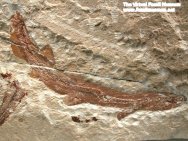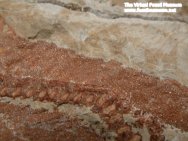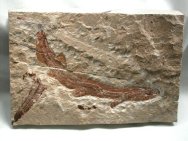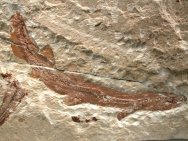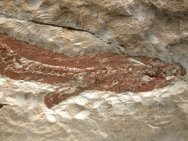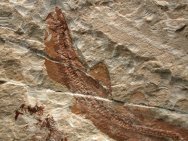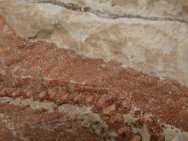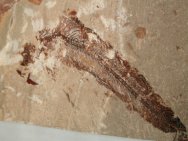Paratriakis curtirostris (shark) and Guadryella gaudryi (fish)
Class
Chondrichthyes; Order Galeiformes; Family Triakidae; Paratriakis curtirostris
and Euteleostei; Order Salmoniformes
Geological Time: Middle Cretaceous, Middle Cenomanian Stage (~95 mya)
Size: shark is 180 mm in length
Fossil Site: Lebanese Sublithographic limestone, Haqel, Lebanon
|
While shark teeth are abundant in the fossils record, the preservation of an entire shark (having a cartilageneous skeleton rather than bones) is an extraordinary rarity. This fossil exemplifies the preservation often found in the Lebanese lithographic limestone where oxygen depletion and rapid sedimentation combined to inhibit decay and enable soft tissue preservation. Also see: Class Chondrichthyes Fish Fossils |
